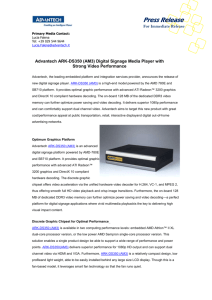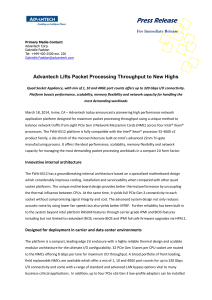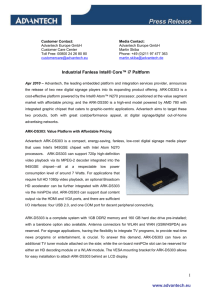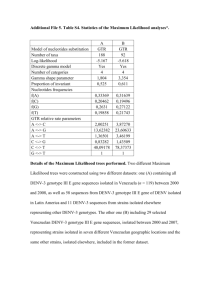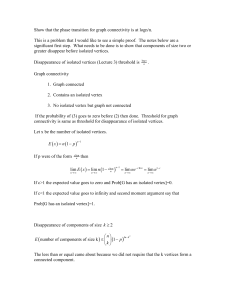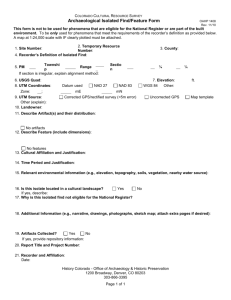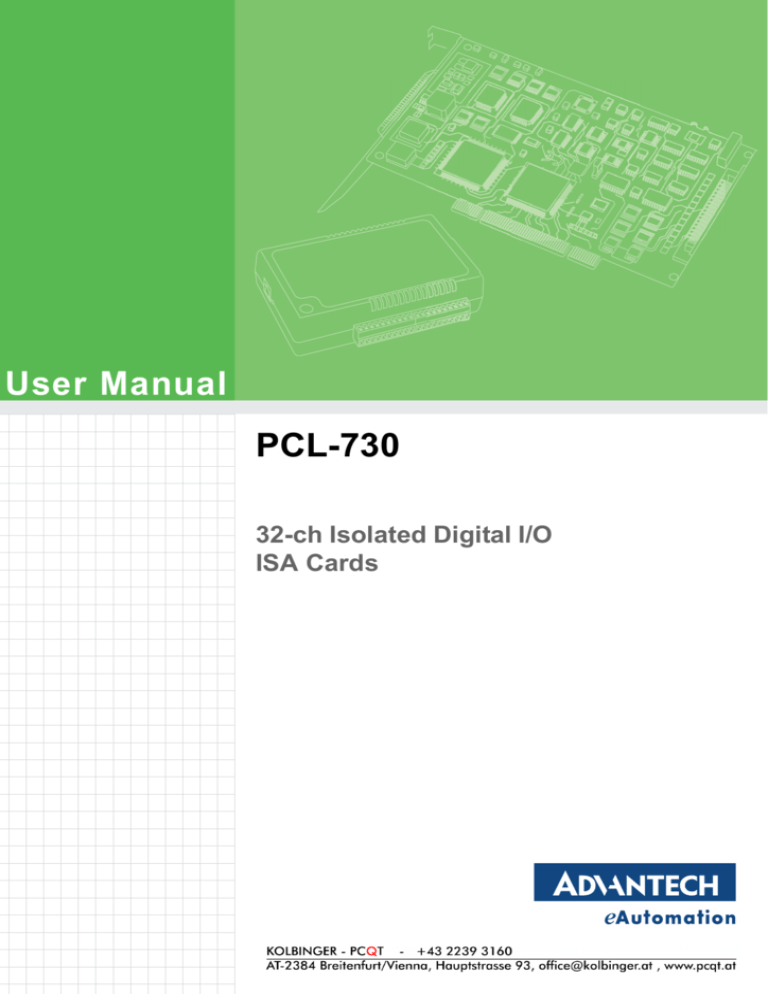
User Manual
PCL-730
32-ch Isolated Digital I/O
ISA Cards
Copyright
The documentation and the software included with this product are copyrighted 2008
by Advantech Co., Ltd. All rights are reserved. Advantech Co., Ltd. reserves the right
to make improvements in the products described in this manual at any time without
notice. No part of this manual may be reproduced, copied, translated or transmitted
in any form or by any means without the prior written permission of Advantech Co.,
Ltd. Information provided in this manual is intended to be accurate and reliable. However, Advantech Co., Ltd. assumes no responsibility for its use, nor for any infringements of the rights of third parties, which may result from its use.
Acknowledgements
Intel and Pentium are trademarks of Intel Corporation.
Microsoft Windows and MS-DOS are registered trademarks of Microsoft Corp.
All other product names or trademarks are properties of their respective owners.
Product Warranty (2 years)
Advantech warrants to you, the original purchaser, that each of its products will be
free from defects in materials and workmanship for two years from the date of purchase.
This warranty does not apply to any products which have been repaired or altered by
persons other than repair personnel authorized by Advantech, or which have been
subject to misuse, abuse, accident or improper installation. Advantech assumes no
liability under the terms of this warranty as a consequence of such events.
Because of Advantech’s high quality-control standards and rigorous testing, most of
our customers never need to use our repair service. If an Advantech product is defective, it will be repaired or replaced at no charge during the warranty period. For outof-warranty repairs, you will be billed according to the cost of replacement materials,
service time and freight. Please consult your dealer for more details.
If you think you have a defective product, follow these steps:
1. Collect all the information about the problem encountered. (For example, CPU
speed, Advantech products used, other hardware and software used, etc.) Note
anything abnormal and list any onscreen messages you get when the problem
occurs.
2. Call your dealer and describe the problem. Please have your manual, product,
and any helpful information readily available.
3. If your product is diagnosed as defective, obtain an RMA (return merchandize
authorization) number from your dealer. This allows us to process your return
more quickly.
4. Carefully pack the defective product, a fully-completed Repair and Replacement
Order Card and a photocopy proof of purchase date (such as your sales receipt)
in a shippable container. A product returned without proof of the purchase date
is not eligible for warranty service.
5. Write the RMA number visibly on the outside of the package and ship it prepaid
to your dealer.
Part Number: 2003730001
Edition 1
Printed in Taiwan
PCL-730 User Manual
March 2012
ii
Declaration of Conformity
CE
This product has passed the CE test for environmental specifications when shielded
cables are used for external wiring. We recommend the use of shielded cables. This
kind of cable is available from Advantech. Please contact your local supplier for
ordering information.
CE
This product has passed the CE test for environmental specifications. Test conditions
for passing included the equipment being operated within an industrial enclosure. In
order to protect the product from being damaged by ESD (Electrostatic Discharge)
and EMI leakage, we strongly recommend the use of CE-compliant industrial enclosure products.
FCC Class B
Note: This equipment has been tested and found to comply with the limits for a Class
B digital device, pursuant to part 15 of the FCC Rules. These limits are designed to
provide reasonable protection against harmful interference in a residential installation. This equipment generates, uses and can radiate radio frequency energy and, if
not installed and used in accordance with the instructions, may cause harmful interference to radio communications. However, there is no guarantee that interference
will not occur in a particular installation. If this equipment does cause harmful interference to radio or television reception, which can be determined by turning the equipment off and on, the user is encouraged to try to correct the interference by one or
more of the following measures:
Reorient or relocate the receiving antenna.
Increase the separation between the equipment and receiver.
Connect the equipment into an outlet on a circuit different from that to which the
receiver is connected.
Consult the dealer or an experienced radio/TV technician for help.
Technical Support and Assistance
1.
2.
Visit the Advantech web site at www.advantech.com/support where you can find
the latest information about the product.
Contact your distributor, sales representative, or Advantech's customer service
center for technical support if you need additional assistance. Please have the
following information ready before you call:
– Product name and serial number
– Description of your peripheral attachments
– Description of your software (operating system, version, application software,
etc.)
– A complete description of the problem
– The exact wording of any error messages
iii
PCL-730 User Manual
Warnings, Cautions and Notes
Warning! Warnings indicate conditions, which if not observed, can cause personal
injury!
Caution! Cautions are included to help you avoid damaging hardware or losing
data. e.g.
There is a danger of a new battery exploding if it is incorrectly installed.
Do not attempt to recharge, force open, or heat the battery. Replace the
battery only with the same or equivalent type recommended by the manufacturer. Discard used batteries according to the manufacturer's
instructions.
Document Feedback
To assist us in making improvements to this manual, we would welcome comments
and constructive criticism. Please send all such - in writing to: support@advantech.com
Safety Instructions
1.
2.
3.
4.
5.
6.
7.
8.
9.
10.
11.
12.
13.
14.
15.
16.
17.
Read these safety instructions carefully.
Keep this User Manual for later reference.
Disconnect this equipment from any AC outlet before cleaning. Use a damp
cloth. Do not use liquid or spray detergents for cleaning.
For plug-in equipment, the power outlet socket must be located near the equipment and must be easily accessible.
Keep this equipment away from humidity.
Put this equipment on a reliable surface during installation. Dropping it or letting
it fall may cause damage.
The openings on the enclosure are for air convection. Protect the equipment
from overheating. DO NOT COVER THE OPENINGS.
Make sure the voltage of the power source is correct before connecting the
equipment to the power outlet.
Position the power cord so that people cannot step on it. Do not place anything
over the power cord.
All cautions and warnings on the equipment should be noted.
If the equipment is not used for a long time, disconnect it from the power source
to avoid damage by transient overvoltage.
Never pour any liquid into an opening. This may cause fire or electrical shock.
Never open the equipment. For safety reasons, the equipment should be
opened only by qualified service personnel.
If one of the following situations arises, get the equipment checked by service
personnel:
The power cord or plug is damaged.
Liquid has penetrated into the equipment.
The equipment has been exposed to moisture.
PCL-730 User Manual
iv
18. The equipment does not work well, or you cannot get it to work according to the
user's manual.
19. The equipment has been dropped and damaged.
20. The equipment has obvious signs of breakage.
21. DO NOT LEAVE THIS EQUIPMENT IN AN ENVIRONMENT WHERE THE
STORAGE TEMPERATURE MAY GO BELOW -20° C (-4° F) OR ABOVE 60° C
(140° F). THIS COULD DAMAGE THE EQUIPMENT. THE EQUIPMENT
SHOULD BE IN A CONTROLLED ENVIRONMENT.
22. CAUTION: DANGER OF EXPLOSION IF BATTERY IS INCORRECTLY
REPLACED. REPLACE ONLY WITH THE SAME OR EQUIVALENT TYPE
RECOMMENDED BY THE MANUFACTURER, DISCARD USED BATTERIES
ACCORDING TO THE MANUFACTURER'S INSTRUCTIONS.
23. The sound pressure level at the operator's position according to IEC 704-1:1982
is no more than 70 dB (A).
Safety Precaution - Static Electricity
DISCLAIMER: This set of instructions is given according to IEC 704-1. Advantech
disclaims all responsibility for the accuracy of any statements contained
herein.Safety Precaution - Static Electricity
Follow these simple precautions to protect yourself from harm and the products from
damage.
To avoid electrical shock, always disconnect the power from your PC chassis
before you work on it. Don't touch any components on the CPU card or other
cards while the PC is on.
Disconnect power before making any configuration changes. The sudden rush
of power as you connect a jumper or install a card may damage sensitive electronic components.
v
PCL-730 User Manual
PCL-730 User Manual
vi
Contents
Chapter
1
Overview...............................................1
1.1
1.2
1.3
1.4
1.5
Introduction ............................................................................................... 2
Features .................................................................................................... 2
Applications............................................................................................... 2
Specifications ............................................................................................ 3
Daughterboards ........................................................................................ 4
2
Hardware Installation ..........................5
2.1
2.2
2.3
2.5
Installation ................................................................................................. 6
Initial Inspection ........................................................................................ 6
Switch and Jumper Settings...................................................................... 7
Table 2.1: Connectors, Jumpers, and Switches .......................... 7
Base Address selection (SW1) ................................................................. 8
2.4.1 Interrupt level (JP1)....................................................................... 8
2.4.2 Interrupt triggering (JP2) ............................................................... 9
2.4.3 Interrupt source (JP3) ................................................................... 9
2.4.4 Version control (JP4/JP5) ............................................................. 9
Hardware Installation ............................................................................. 10
3
Signal Connections ...........................11
3.1
3.2
3.3
Overview ................................................................................................. 12
Connector Pin Assignments.................................................................... 12
TTL-level I/O ........................................................................................... 14
3.3.1 Isolated Input .............................................................................. 14
3.3.2 Isolated Output............................................................................ 15
Appendix A
Register Format .................................17
A.1
Register Format ...................................................................................... 18
Table A.1: Register Assignment ................................................ 18
Appendix B
PC I/O Port Address Map ..................19
B.1
PC I/O port address map ........................................................................ 20
Chapter
2.4
Chapter
vii
PCL-730 User Manual
PCL-730 User Manual
viii
Chapter
1
Overview
1
1.1 Introduction
The PCL-730 offers 32 isolated digital I/O channels (16 DI and 16 DO) and 32 TTL
digital I/O channels (16 DI and 16 DO) on a PC add-on card. Providing 2500 VDC isolation, each I/O channel corresponds to a bit in a PC I/O port, making the PCL-730
very easy to program. The PCL-730 offers one PC interrupt with jumper-selectable
IRQ.
1.2 Features
32 isolated DIO channels (16 inputs and 16 outputs)
32 TTL-level DIO channels (16 inputs and 16 outputs)
High output driving capacity
High-voltage isolation on isolated I/O channels (2500 VDC)
Interrupt capacity
Two separate 20-pin connectors for isolated input channels and output channels
D-type connectors for isolated input channels and output channels
High sink current on isolated output channels (200 mA/channel)
1.3 Applications
Industrial ON/OFF control
Contact closure monitoring
Switch status sensing
BCD interfacing
Digital I/O control
Industrial and lab automation
PCL-730 User Manual
2
Chapter 1
1.4 Specifications
Digital input
16 optically-isolated inputs
Input voltage: 5 to 24 VDC
Input resistance: 3 KΩ @ 0.2 W
Isolation voltage: 2,500 VDC
Maximum speed: 10 KHz
Overview
16 TTL-level inputs
Input voltage:
– Low: 0.8 V max.
– High: 2.0 V min.
Input load:
– Low: 0.4 mA max at 0.5 V
– High: 0.05 mA max at 2.7 V
Digital output
16 optically-isolated outputs
Output voltage: Open collector 5 to 40 VDC
Sink current: 200 mA max.
Isolation voltage: 2500 VDC
16 TTL-level outputs
Output voltage:
– Low: Sink 8 mA at 0.5 V max.
– High: Source -0.4 mA at 2.4 V min.
Interrupt source
Jumper selectable:
Channels 0 and 1 of Isolated DI port or
Channels 0 and 1 of TTL DI port
Register format
BASE+0 and BASE+1
BASE+2 and BASE+3
Isolated DI/O
TTL DI/O
Dimensions
185 mm x 100 mm
Connectors
DB-37 connector for isolated DIO
Two 20-pin flat-cable connectors for isolated DIO
Two 20-pin flat-cable connectors for TTL DIO
Power consumption
+5 V: 330 mA typical, 500 mA maximum
+12V: 80 mA typical, 105 mA maximum
3
PCL-730 User Manual
1.5 Daughterboards
The PCL-730 interfaces with a wide variety of Advantech daughterboards, such as
the following:
PCLD-786 AC/DC power SSR and relay driver board
This board holds eight optically-isolated solid state relay modules and provides an
additional eight outputs to drive external relays.
PCLD-785B and PCLD-885 relay output boards
These boards let you control relays through the PCL-730's 16-bit TTL digital output
channels. PCLD-785B provides 24 SPDT relays, while the PCLD-885 provides 16
SPST power relays.
PCLD-782B Isolated D/I Board
This board provides 24 optically-isolated digital input channels and a cable to connect to the PCL-730's digital input ports.
PCLD-885
The PCLD-885 provides 16 SPST power relay channels with a maximum contact rating of AC: 250V, 5A or DC: 20V, 5A. The PCLD-885 can be driven directly by the digital outputs of PCLabCards through 20-pin flat-cable connectors or 50-pin OPTO-22
compatible connectors.
PCL-730 User Manual
4
Chapter
2
2
Hardware Installation
2.1 Installation
This chapter gives users a package item checklist, proper instructions about unpacking and step-by-step procedures for both driver and card installation.
2.2 Initial Inspection
We carefully inspected the PCL-730 both mechanically and electrically before shipment. It should be free of marks and in perfect order on receipt.
As you unpack the PCL-730, check it for signs of shipping damage (damaged box,
scratches, dents, etc.). If it is damaged or fails to meet specifications, notify our service department or your local sales representative immediately. Also, call the carrier
immediately and retain the shipping carton and packing material for inspection by the
carrier. We will then make arrangements to repair or replace the unit.
Discharge any static electricity on your body before you touch the board by touching
the back of the system unit (grounded metal).
Remove the PCL-730 card from its protective packaging by grasping the rear metal
panel. Handle the card only by its edges to avoid static electric discharge which could
damage its integrated circuits. Keep the antistatic package. Whenever you remove
the card from the PC, please store the card in this package for protection.
You should also avoid contact with materials that hold static electricity such as plastic, vinyl and styrofoam.
PCL-730 User Manual
6
The PCL-730 card has one function switch and four jumper settings.
The following sections tell how to configure the card. You may want to refer to the
opposite page for help identifying card components.
Chapter 2
2.3 Switch and Jumper Settings
Hardware Installation
Table 2.1: Connectors, Jumpers, and Switches
Label
CN1
CN2
CN3
CN4
CN5
CN6
JP1
JP2
JP3
JP4/5
SW1
Function
Isolated output
Isolated input
Digital output
Digital input
E.GND (external ground)
Isolated input/output
Interrupt level
Interrupt trigger
Interrupt source
Version control
Card base address
7
PCL-730 User Manual
2.4 Base Address selection (SW1)
You control the PCL-730's operation by reading or writing data to the PC's I/O (input/
output) port addresses. The PCL-730 requires four consecutive address locations.
Switch SW1 sets the card's base (beginning) address. Valid base addresses range
from Hex 200 to Hex 3F0. Other devices in your system may, however, be using
some of these addresses.
We set the PCL-730 for a base address of Hex 300 at the factory. If you need to
adjust it to some other address range, set switch SW1 as shown in the following
table:
Note: Switches 1-8 control the PC bus address lines as shown below:
Switch
Line
1
A9
2
A8
3
A7
4
A6
5
A5
6
A4
7
A3
8
A2
2.4.1 Interrupt level (JP1)
Jumper JP1 controls the card's IRQ level, as shown below. Position X disables the
interrupt.
PCL-730 User Manual
8
Jumper JP2 selects the trigger edge (rising or falling) on which the card will trigger an
interrupt. Jumper settings appear below:
Jumper JP3 selects the source of the card's interrupt.
Setting
Channel
Connector
IDI0
Isolated DI Channel 0
CN2 Pin 1
IDI1
Isolated DI Channel 1
CN2 Pin 2
DI0
TTL DI Channel 0
CN4 Pin 1
DI1
TTL DI Channel 1
CN4 Pin 2
2.4.4 Version control (JP4/JP5)
Jumper JP4 controls the pin assignments for CN1 and CN6 while JP5 controls it for
CN2 and CN6. Setting this jumper to A1 makes the card's pin assignments the same
as the A1 version.
9
PCL-730 User Manual
Hardware Installation
2.4.3 Interrupt source (JP3)
Chapter 2
2.4.2 Interrupt triggering (JP2)
2.5 Hardware Installation
Warning! TURN OFF your PC power supply whenever you install or remove the PCL-730
or connect and disconnect cables.
1.
2.
3.
4.
5.
6.
7.
8.
9.
Turn the computer off. Turn the power off to any peripheral devices such as
printers and monitors.
Disconnect the power cord and any other cables from the back of the computer.
Remove the system unit cover (see the user's guide for your chassis if necessary).
Locate the expansion slots at the rear of the unit and choose any unused slot.
Remove the screw that secures the expansion slot cover to the system unit.
Save the screw to secure the interface card retaining bracket.
Carefully grasp the upper edge of the PCL-730 card. Align the hole in the retaining bracket with the hole on top of the expansion slot and align the gold striped
edge connector with the expansion slot socket. Press the board firmly into the
socket.
Secure the PCL-730 using the screw you removed in Step 5.
Attach any accessories (using 20 pin flat cables, a DB-37 cable, etc.) to the
PCL-730.
Replace the system unit cover. Connect the cables you removed in Step 2. Turn
the computer power on.
PCL-730 User Manual
10
Chapter
3
3
Signal Connections
3.1 Overview
Maintaining signal connections is one of the most important factors in ensuring that
your application system is sending and receiving data correctly. A good signal connection can avoid unnecessary and costly damage to your PC and other hardware
devices. This chapter provides useful information about how to connect input and
output signals to the PCL-730 via the I/O connector.
3.2 Connector Pin Assignments
The PCL-730 has four on-board 20-pin flat-cable connectors (insulation displacement, mass termination) and a DB-37 connector accessible from the card bracket.
See the figure on page 7 for the location of each connector.
Pin assignments for each connector appear in the following sections.
*NOTE: When JP4 is set to B1, Pin 19 on CN1 and Pin 10 on CN6 will both be
assigned PCOM1. When JP4 is set to A1, both pins will be assigned E.GND. For
JP5, Pin 17 & 19 and Pin 18 & 20 on CN2 will combine together (be the same GND)
when JP5 is set to A1. But Pin 17 & 19 and Pin 18 & 20 on CN2 will be different GND
(EI.GND1 and EI.GND2 separately) when JP5 is set to B1.
PCL-730 User Manual
12
Chapter 3
Signal Connections
PCL-730 User Manual
13
3.3 TTL-level I/O
The PCL-730 has 16 TTL-level digital inputs and 16 TTL-level digital outputs. The following figure shows connections to exchange digital signals with other TTL devices:
If you want to receive an OPEN/SHORT signal from a switch or relay, add a pull-up
resistor to ensure that the input is held at a high level when the contacts are open.
See the figure below:
3.3.1 Isolated Input
Each of the 16 isolated digital input channels accept voltages from 5 to 24V and have
a resistance of 3 kΩ. Every eight input channels share one external ground. (Channels 0~7 use EI.GND1. Channels 8~15 use EI.GND2.) The following figure shows
how to connect an external input source to the card's isolated inputs:
PCL-730 User Manual
14
Each of the 16 isolated digital output channels comes equipped with a MOSFET.
Every eight output channels share common emitters and integral suppression diodes
for inductive load, activated by connecting PCOM to VDD. (Channels 0~7 use
PCOM1. Channels 8~15 use PCOM2.)
If the external voltage (5~40V) is connected to each isolated output channel (IDO)
and its isolated digital output turns on (200mA per channel maximum), the card's current will sink from the external voltage.
Chapter 3
3.3.2 Isolated Output
Signal Connections
15
PCL-730 User Manual
PCL-730 User Manual
16
Appendix
A
Register Format
A
A.1 Register Format
Programming the PCL-730 is extremely simple. Each I/O channel corresponds to a
bit in the card's registers. To turn on an output channel you write a ‘‘1” to the corresponding bit. To read an input port, you simply read from the register.
The card requires four I/O register addresses. The address of each register is specified as an offset from the card's base address. For example, BASE+0 is the card's
base address and BASE+2 is the base address + two bytes. If the card's base
address is 300h, the register's address is 302h. See Chapter 2 for information on setting the card's base address.
Table A.1: Register Assignment
Address
Write
Read
BASE + 0
IDO bits 0-7
IDI bits 0-7
BASE + 1
IDO bits 8-15
IDI bits 8-15
BASE + 2
DO bits 0-7
DI bits 0-7
BASE + 3
DO bits 8-15
DI bits 8-15
PCL-730 User Manual
18
Appendix
B
B
PC I/O Port Address
Map
B.1 PC I/O Port Address Map
Range (hex)
Function
000-1FF
Base System
200
Reserved
201
Came Control
202-277
Reserved
278-27F
Second Printer Port
280-2F7
Reserved
2F8-2FF
COM 2
300-377
Reserved
3713-37F
First Printer Port
380-3AF
Reserved
3B0-3BF
Mono Display/Print Adapter
3C0-3CF
Reserved
3D0-3DF
Color/Graphics
3E0-3EF
Reserved
3F0-3F7
Floppy Disk Drive
3F8-3FF
COM 1
PCL-730User Manual
20
Appendix B PC I/O Port Address Map
PCI-1730/1733/1734 User Manual
21
www.advantech.com
Please verify specifications before quoting. This guide is intended for reference
purposes only.
All product specifications are subject to change without notice.
No part of this publication may be reproduced in any form or by any means,
electronic, photocopying, recording or otherwise, without prior written permission of the publisher.
All brand and product names are trademarks or registered trademarks of their
respective companies.
© Advantech Co., Ltd. 2011


